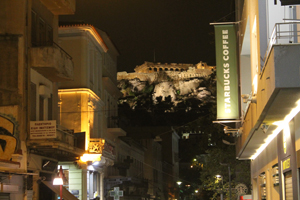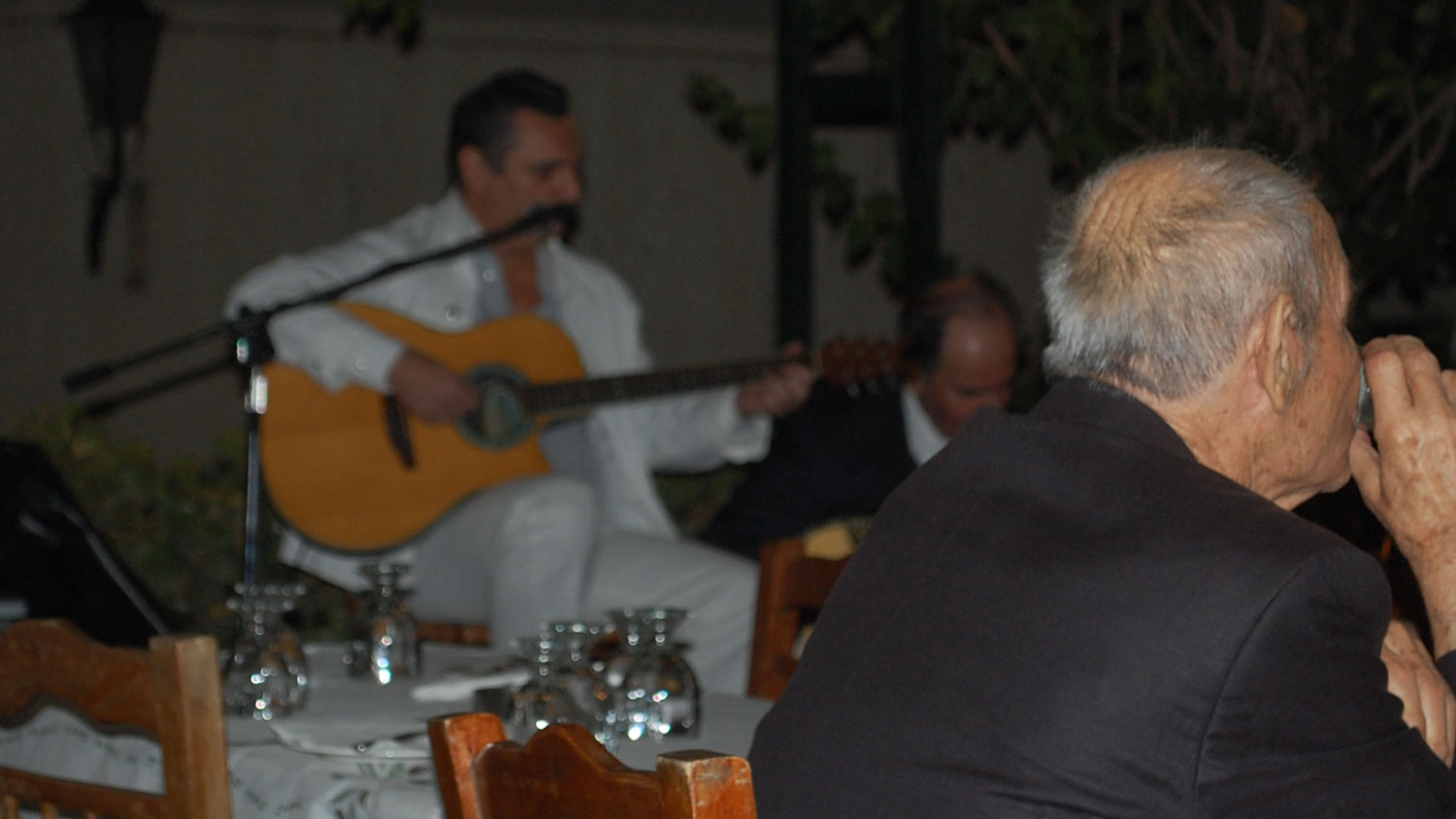The Plaka is a historic neighbourhood that sits at the bottom of the Acropolis. The streets are narrow and buildings low, mostly constructed in the nineteenth century. It’s a combination of residential and commercial occupation. As we wandered through the area we would catch glimpses of the Acropolis, with the Parthenon lit up above us, and that was pretty special I can tell you. Exotic and exciting and there. It made the whole long plane trip worthwhile.

At nine in the evening the streets were quiet and most of the shops were closed. Where there were sidewalks, they were narrow and on some of the streets we (and other pedestrians) wandered down the middle. No streets were straight, at least none of them seemed straight, and they intersected each other with a heady abandon that made the map useless.
At one point a kind Athenian woman stopped us and asked us if we were lost. How did she know? Maybe it was the fact we were at a corner, consulting the map and wearing baffled expressions. Anyway, when we told her the name of our destination, she frowned, then briskly told us where to turn and how long it should take us to get there. Apparently we were already far off course, and we’d only just entered the maze.
We thanked her and tried to follow her directions, but had no success. The streets turned and twisted, the looming Acropolis got closer and the Parthenon above more clearly defined. We were not where we were supposed to be.
Eventually we gave up looking for the concierge’s suggestions and just looked for a restaurant. As you might expect in a popular tourist area, there were lots of restaurants in the Plaka. I don’t know the name of the one we found. I didn’t write it down and the bill they gave us used the Greek script. I also don’t know what street it was on, so no help there. All I know is that it was wonderful.
Most restaurants in the area had their menus posted outside the front door and a person stationed nearby to encourage browsers to come on in. Like most Greek menus this one was printed in English and Greek, though the English was remarkably unhelpful, stating only the most basic information about the food item. For instance, we shared an appetizer that was called “rolled eggplant”. Yes, it was eggplant, rolled up and roasted, but there was something inside the roll. I have no idea what it was, but it was delicious. This lack of details made eating in Greece something of an adventure.
The other thing about Greek menus is that they were all pretty much the same because of that lack of descriptive detail. There’s no indication how this restaurant’s roasted lamb is different from the place down the street’s roasted lamb. So when choosing a restaurant we looked for the ascetics. What’s the view like? Is it clean? How’s the ambiance? Are there other people there? (That’s always a good one. Beware the empty restaurant.) And, of course, the price, remembering to translate from euros to dollars.
This place was an open patio, up a few stairs from the street. It was pretty (check), looked clean (check), from what we could see from the doorway at least half the tables were already filled (check) and we were to discover that the place was brimming with ambiance. So after some discussion in limited English (the restaurateur), no Greek (us) and a lot of smiles and nods on all sides, we were ushered inside.
